Officially the Hong Kong Special Administrative Region of the People’s Republic of China, Hong Kong is situated on the southern coast of China and consists of a peninsula and several islands.
This destination, which might not initially seem like part of a typical backpacking trip, wasn’t in our plans until visa issues forced us to leave the Philippines. Hong Kong emerged as a relatively affordable option for flights departing from Manila.
The city is also commonly used as a stopover on some long-haul flights. Even if you hadn’t planned to visit, you could take advantage of passing through on your way to another country and explore it.
Hong Kong is expensive, especially compared to Southeast Asia, but you can explore and enjoy it without overspending by saving on things like accommodation and food. We managed to do it in 4 days, and below, we share what we saw and how we did it.
The city is enormous, and despite the length of this guide, it’s a super-condensed summary of everything. This is the kind of information I wish I’d had when I first started planning our trip and didn’t know where to begin. From here, you can start piecing together your own itinerary.
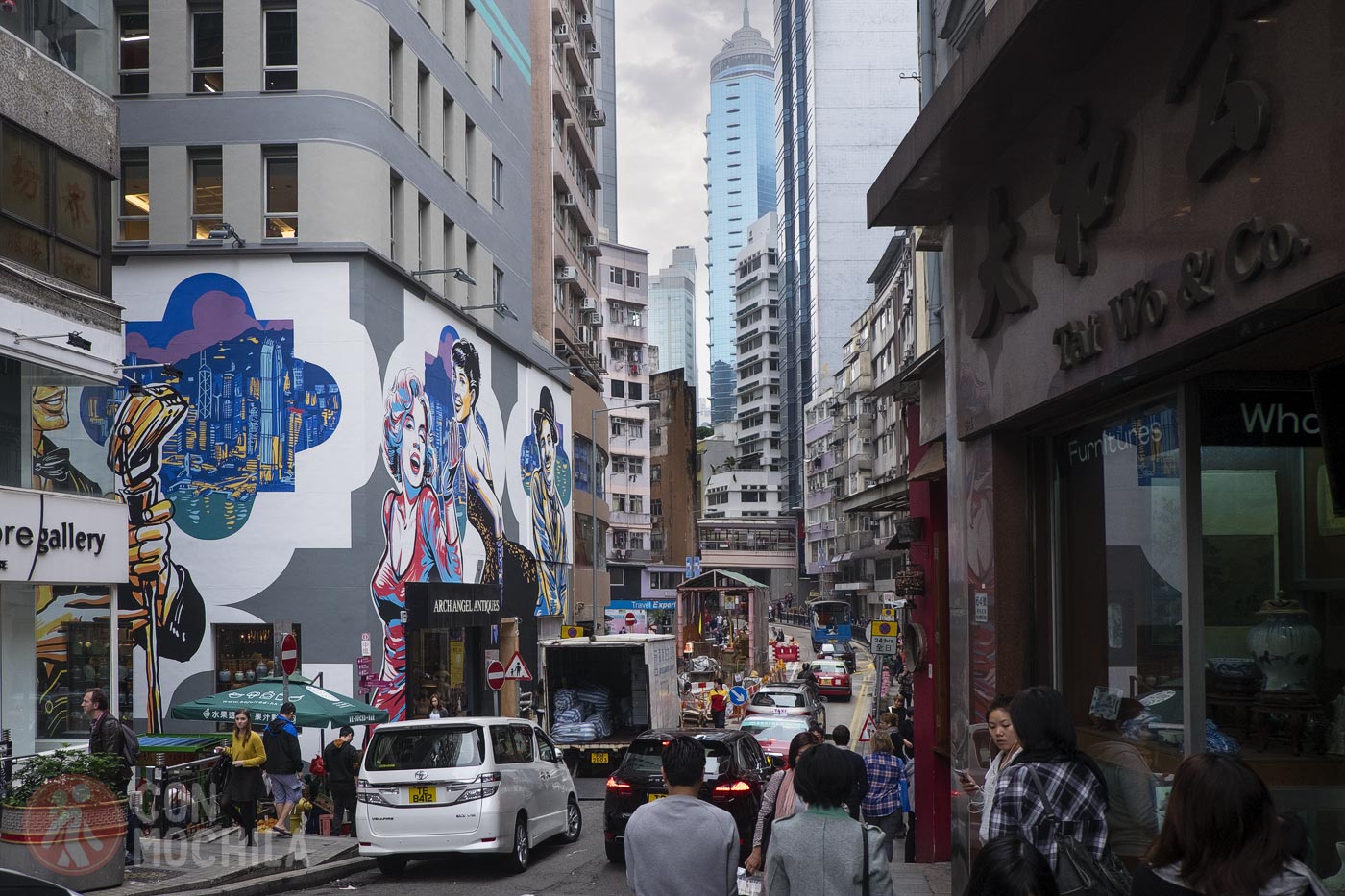
Given the time we had and the distribution of most tourist attractions, we divided our visit into three main areas: Kowloon, the peninsular section of Hong Kong, Hong Kong Island, and Lantau Island.
On our extra day, we revisited the center of Hong Kong Island and climbed Victoria Peak again. The first time, we attempted to go on a Saturday, but the tram queue was far longer than our patience could handle.
As a result, we missed a day we could have spent visiting Macau, about which, unfortunately, we don’t have much information to share.
Hong Kong offers a mix of towering skyscrapers, traditional temples, luxury boutiques, bustling street markets, and a rich variety of food from China and beyond.
Edificios colosales, templos tradicionales, tiendas exclusivas, mercadillos en la calle, comida china y de otras muchas nacionalidades.
In this guide, we’ve listed the most famous places we visited, but the truth is, Hong Kong is an easy city to navigate. Grab a map and start walking—while searching for one landmark, you’ll stumble upon countless others. Enjoy the adventure!
If you’re a citizen of the European Union, you don’t need a visa to visit Hong Kong. Your permitted length of stay will vary from 7 to 180 days depending on your nationality. Specifically, most Europeans are allowed a 90-day stay without a visa.
If you’re planning a trip to Hong Kong, you’ve probably already started looking at flight prices. Since airfare often takes up a significant portion of the travel budget, here are some tips for finding cheap flights to Hong Kong. The money you save can be spent exploring the country or on other travel expenses.
It’s essential to travel to Laos with comprehensive insurance. We were among the first to offer the popular 5% IATI discount, and you can now get it with Heymondo Travel Insurance as well. You can find more information about both companies through the links provided above, or you can access the discount directly using the buttons below (in both cases, you’ll see the reduced final price on their website):
The best time to visit Hong Kong is between October and December, when the weather is mild, with temperatures ranging from 15°C to 25°C and clear skies. This period, corresponding to autumn in the region, provides ideal conditions for comfortably exploring the city, with low humidity and pleasant temperatures.
January and February are also good months to visit, especially if you want to experience the Lunar New Year celebrations, which attract many tourists. However, this is a peak travel season, with cooler temperatures (10°C to 20°C) and larger crowds, so it’s advisable to plan ahead.
It’s best to avoid the rainy season, which lasts from May to September. During this period, Hong Kong experiences high temperatures, intense humidity, and an increased likelihood of typhoons. July and August, in particular, can be challenging for travelers due to extreme heat and heavy rainfall.
While many hotels, guesthouses, and restaurants in Sri Lanka offer free Wi-Fi, some travelers prefer or need a constant connection.
We’ve included details on obtaining a Hong Kong eSIM card with unlimited data. If you want to get one directly, use the following link (with a discount):
Most of what we saw was concentrated in this area, which is why we spent nearly two days there. To access Hong Kong Island from Kowloon, it’s best to go to the port and take the ferry that crosses Victoria Bay (HK$3.40 per trip).
From there, you can walk to all the places we describe below, except for Victoria Peak.
Victoria Peak is a viewpoint offering beautiful city views, especially when the weather is clear. However, don’t expect a romantic or special experience, as it’s simply a shopping mall where you take an elevator to the rooftop for the city views.
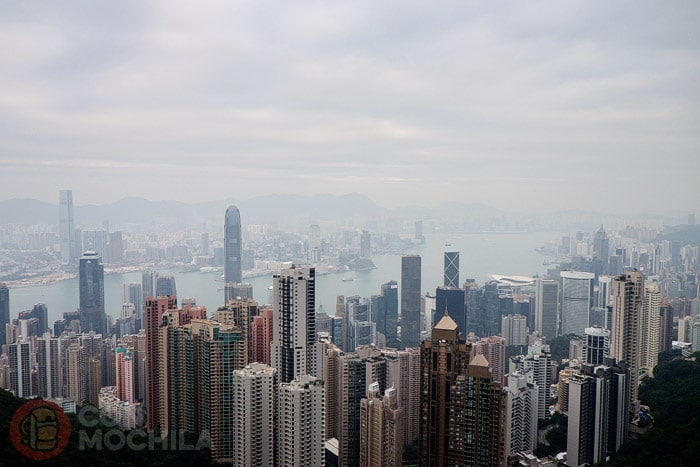
The most striking aspect is the sensation of ascending to heaven on an escalator, as the walls of the shopping mall are made of glass, providing glimpses of the city during the ascent.
As in any city, aimless wandering is always an option. Strolling through the markets, discovering hidden gems not found in guidebooks.
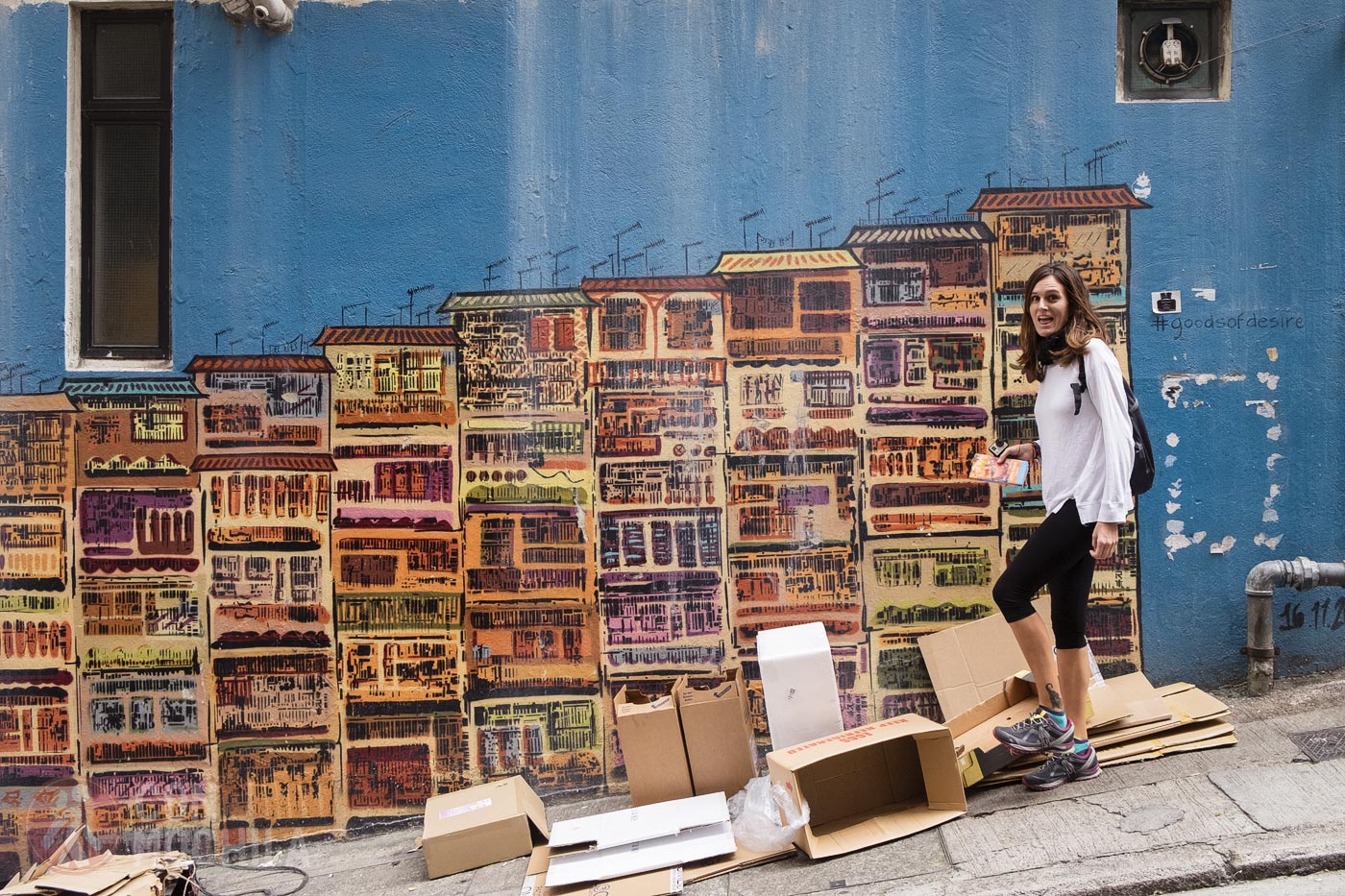
One of the most emblematic streets is Hollywood Road, the second street built when the city was founded. It’s lined with antique shops of all kinds and has become Hong Kong’s contemporary art district.
The first gallery opened in 1987, and since then, many other galleries have followed.
Man Mo Temple, built in 1980 in honor of the God of Letters (Man) and the God of War (Mo), is one of Hong Kong’s oldest temples.
It’s a photogenic place visited by tourists and revered by locals, where one can momentarily forget they’re in a bustling city.
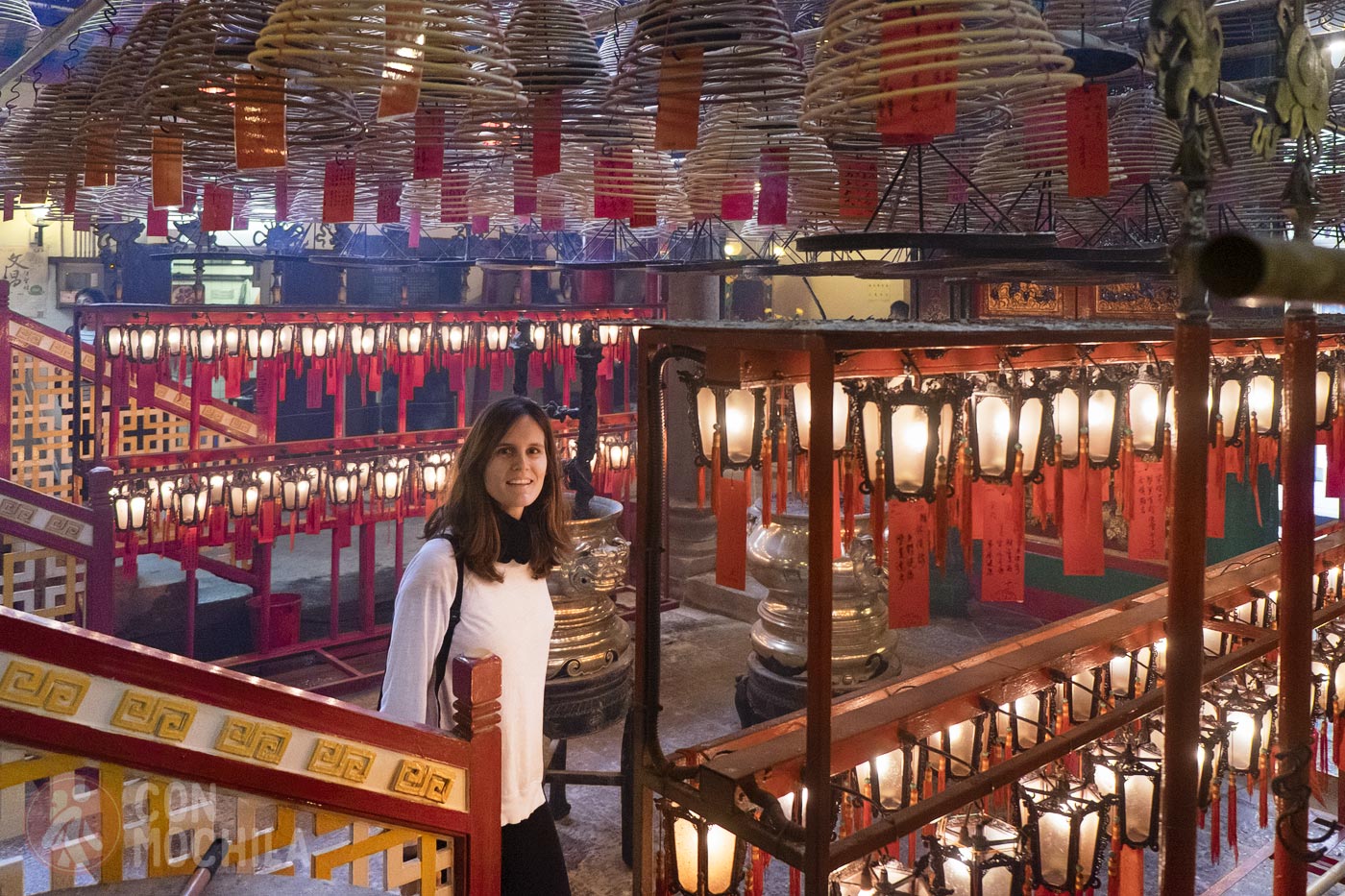
The calm atmosphere, however, is occasionally disrupted by the smoke from the coils and incense sticks, as it was for us—resulting in unexpected tears.
These two major avenues run through much of central Hong Kong Island and are bustling with people shopping, tourists strolling, and locals commuting.
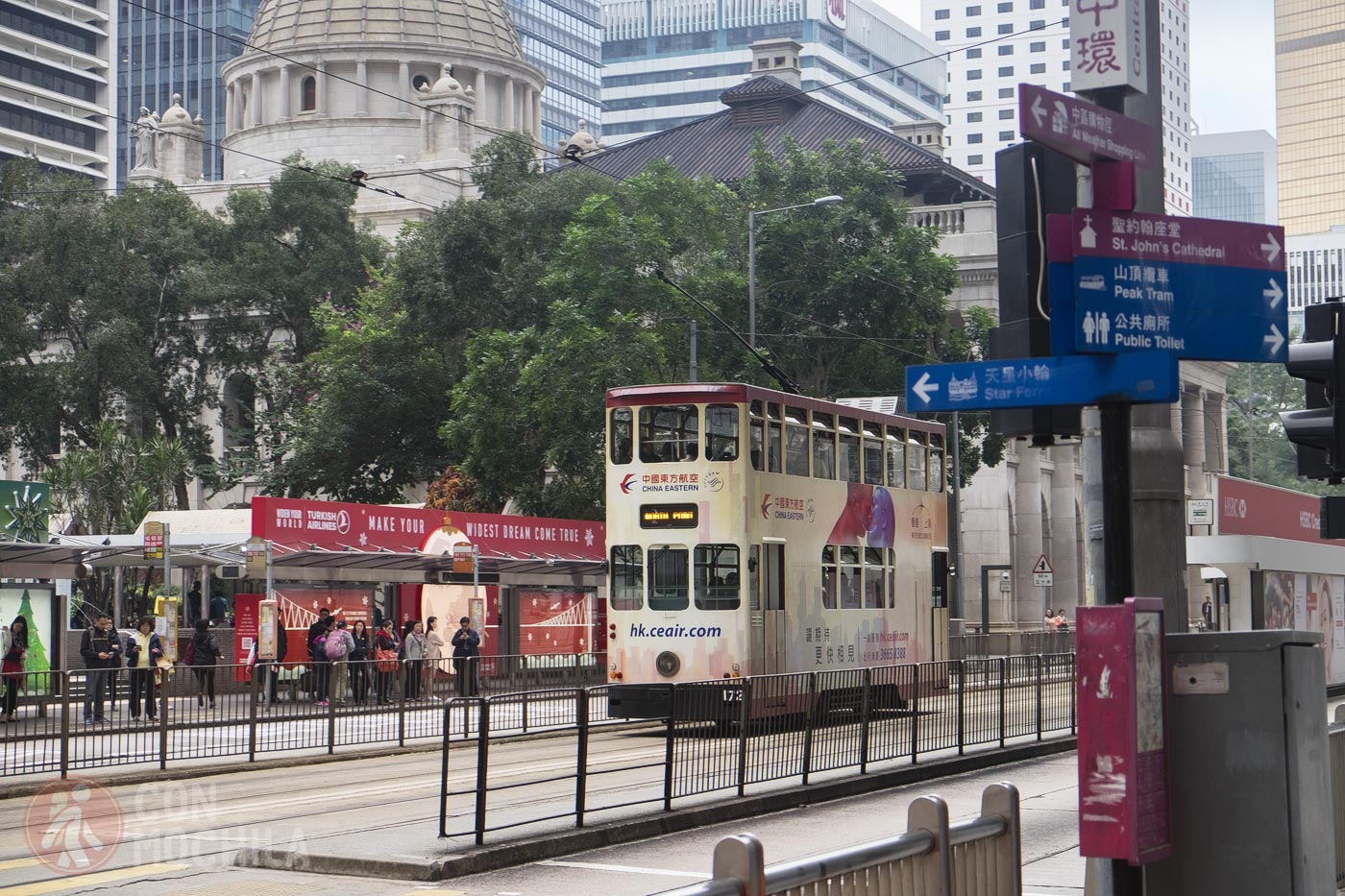
They’re lined with exclusive shops and shopping malls, so even if you’re not planning to buy anything, walking through the streets will take you to other points of interest.
This pedestrian plaza with a fountain was built in the late 19th century to honor royalty and once featured numerous statues of colonial leaders.
Today, only one statue remains, making it a meeting point for tourists and parents with children.
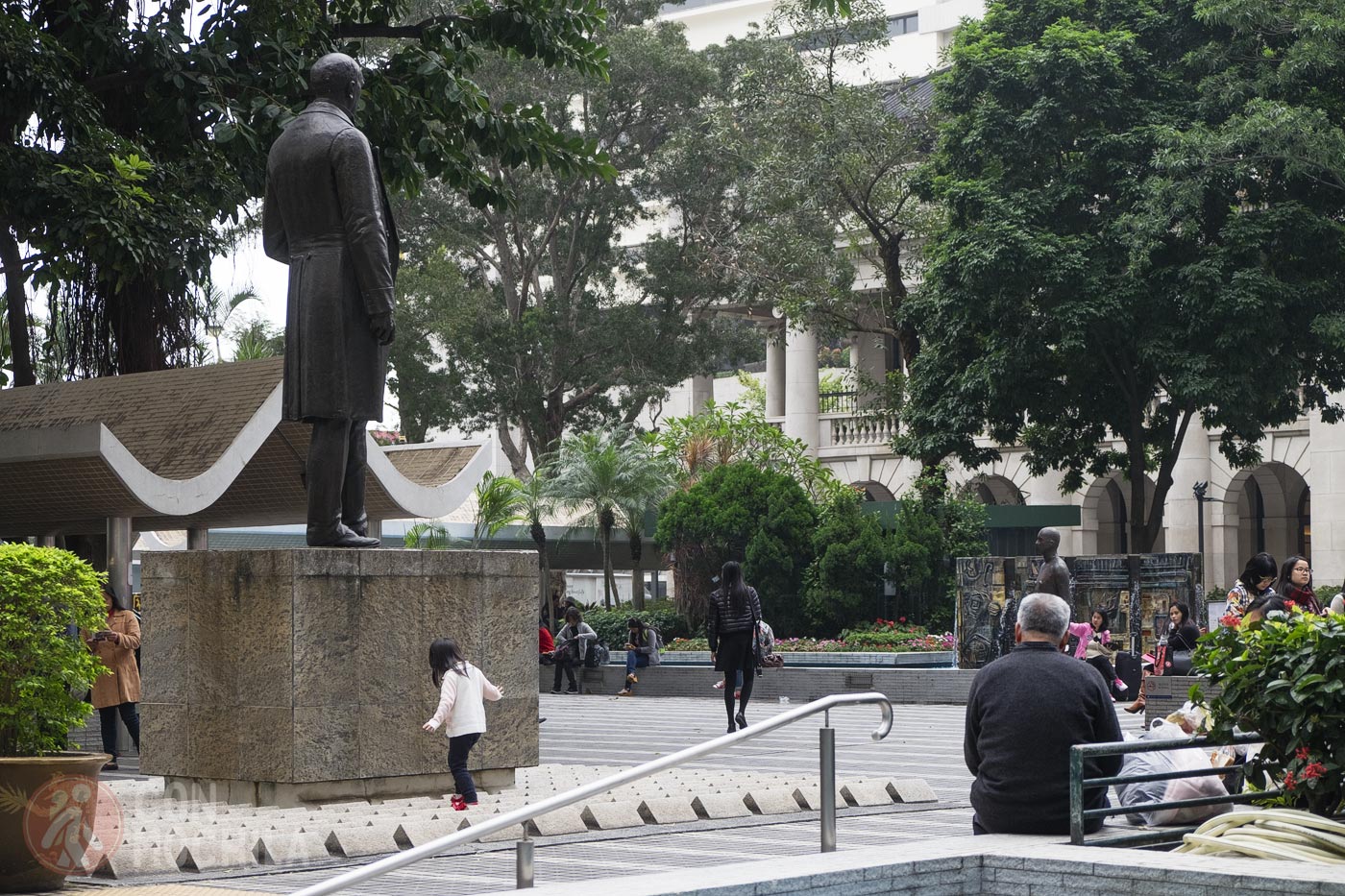
Across from Des Voeux Road are the three famous banks: the Hong Kong and Shanghai Banking Corporation (HSBC), the Bank of China, and the Old Bank of China.
Lan Kwai Fong is often described as the city’s coolest nightlife area. The street itself, after which the whole area is named, is famous for its atmosphere and packed with restaurants, bars, and pubs.
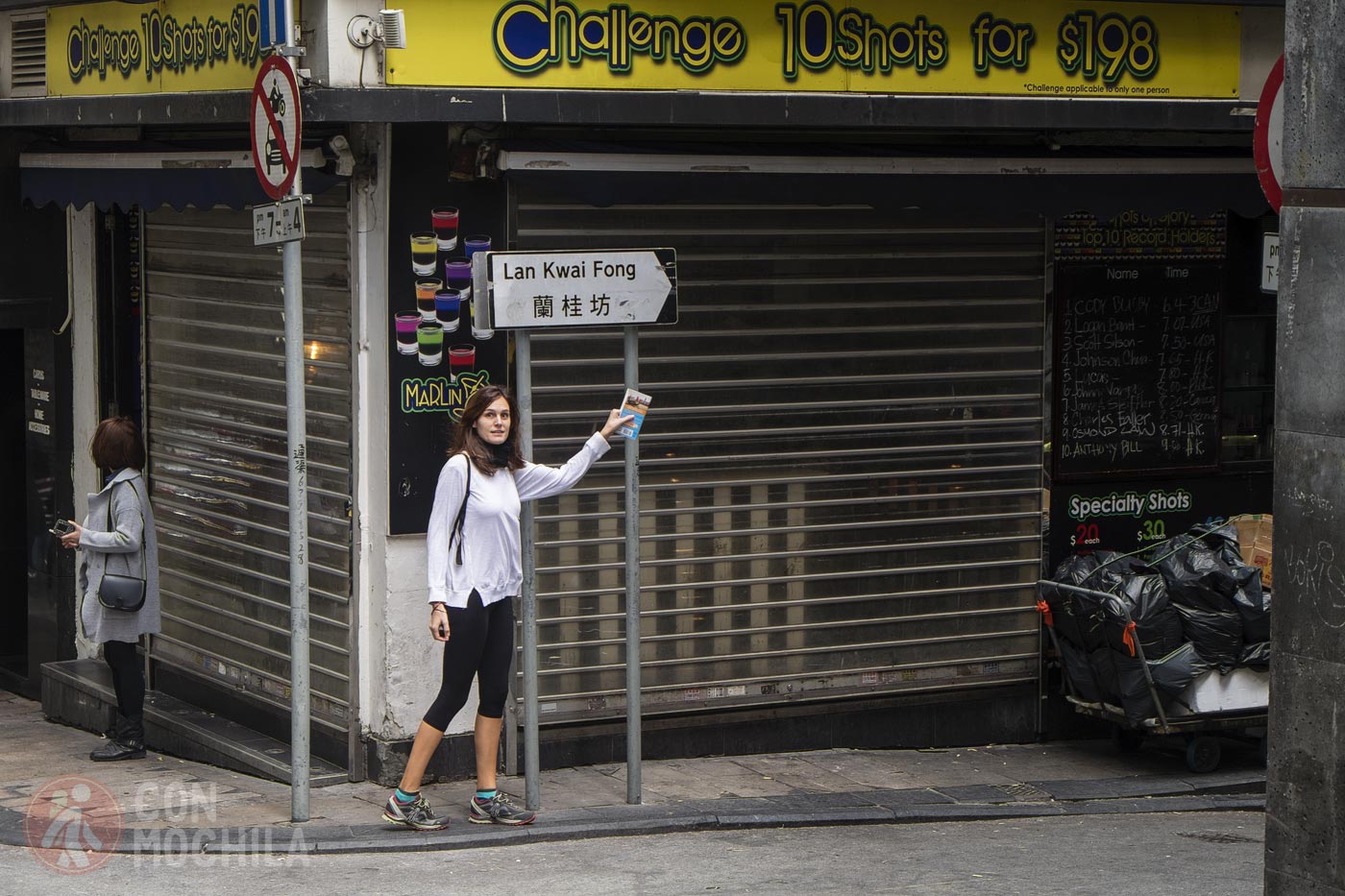
It must be much livelier at night. When we visited during midday, however, the street was quiet, with cleaners preparing the venues, but no sign of the nightlife yet.
This park, often referred to as Hong Kong’s “lung,” didn’t impress us as much as Singapore’s Botanical Garden.
However, it’s a pleasant spot for a leisurely stroll among the greenery, offering a break from the city’s traffic and bustling pace (though to be honest, in Hong Kong, we never really felt like we were in a big city).
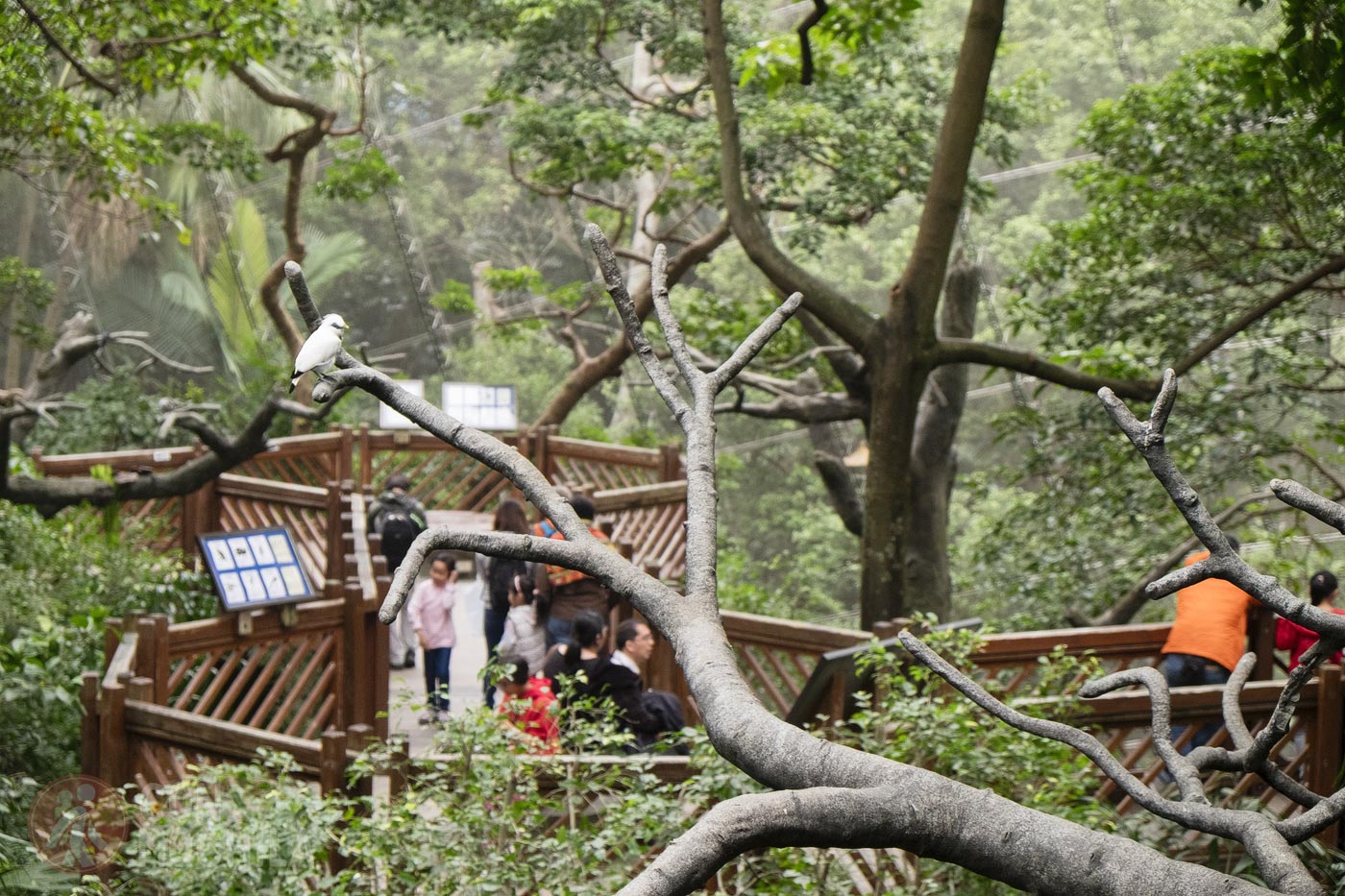
The free entrance is located right next to the Peak Tram station.
It is the peninsular part of Hong Kong, and although the places to visit are spread out, they are all easily accessible by subway.
The Sik Sik Yuen Taoist temple is dedicated to Wong Tai Sin, a shepherd renowned for his healing powers. The temple consists of several colorful buildings arranged in a pedestrian area that invites leisurely strolls.
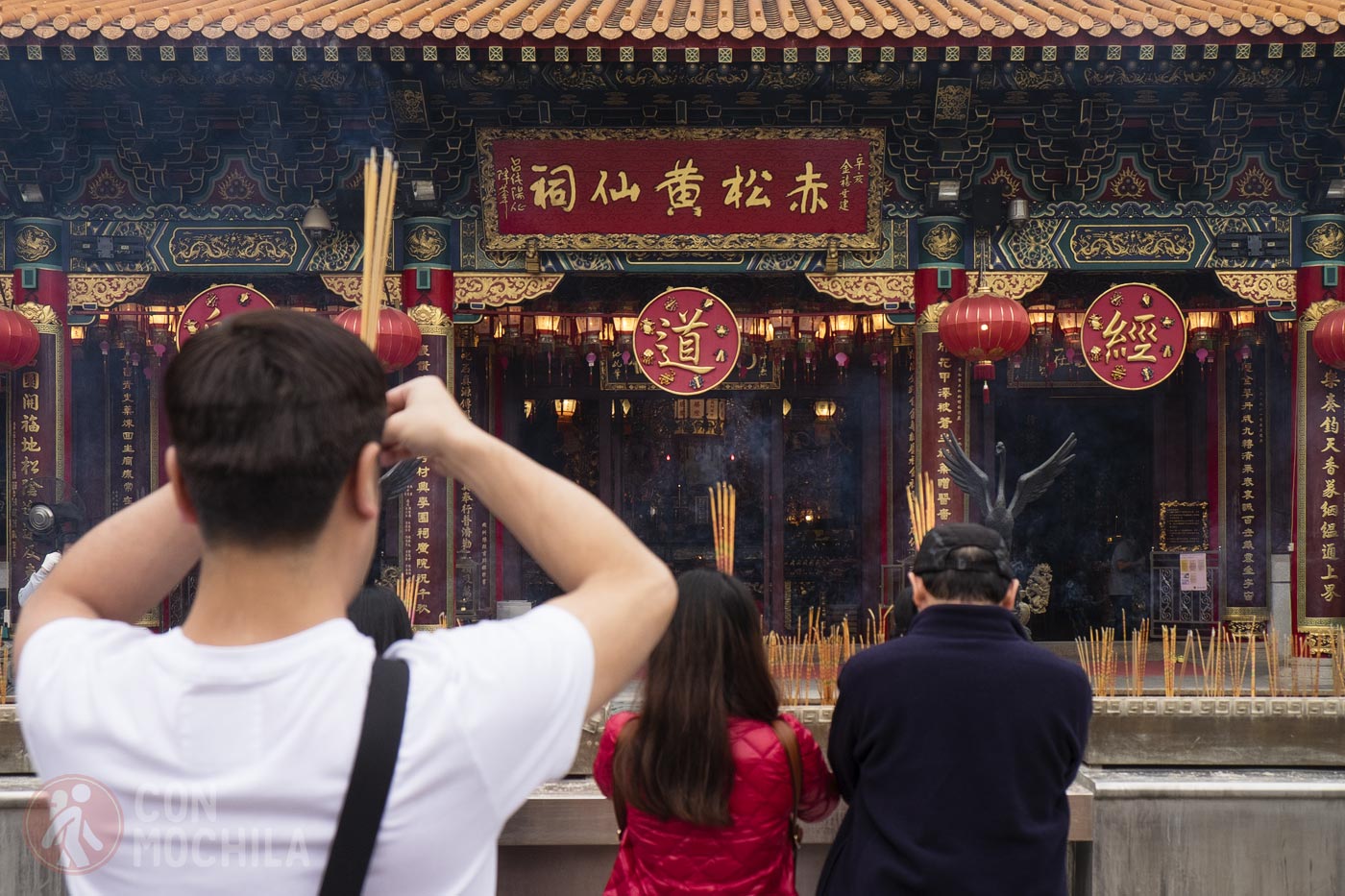
This place, where religious motifs merge with nature, is visited by both tourists and devotees who, in addition to praying, make their wishes. To reach it, stop at the Wong Tai Sin metro station on the green line, entrance B2.
Nan Lian Garden is accessible either on foot from the previous temple or by stopping directly at Diamond Hill Station. It is the perfect spot for a relaxing walk.
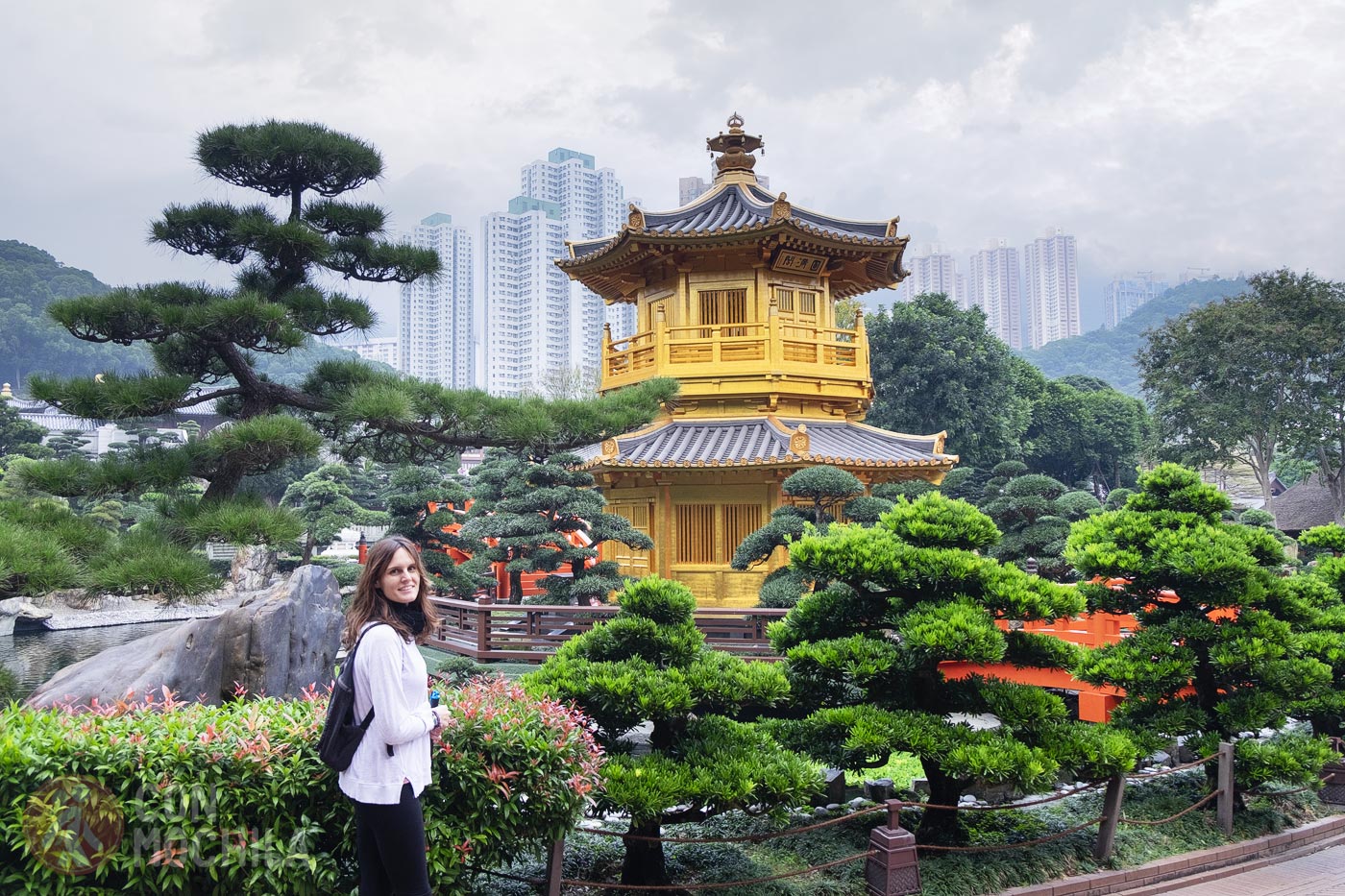
Although its location might seem noisy due to the busy road passing by, inside the park, you can enjoy almost complete tranquility amidst trees, lakes, bridges, waterfalls, and various exhibitions.
It’s a very photogenic place, ideal for plant lovers.
This Hong Kong Walk of Fame is a tribute to the city’s actors and film industry. In true Hollywood style, this small avenue, the Garden of Stars, located near the port and overlooking Victoria Bay, is adorned with handprints (including Jackie Chan’s), signatures, and statues of actors.
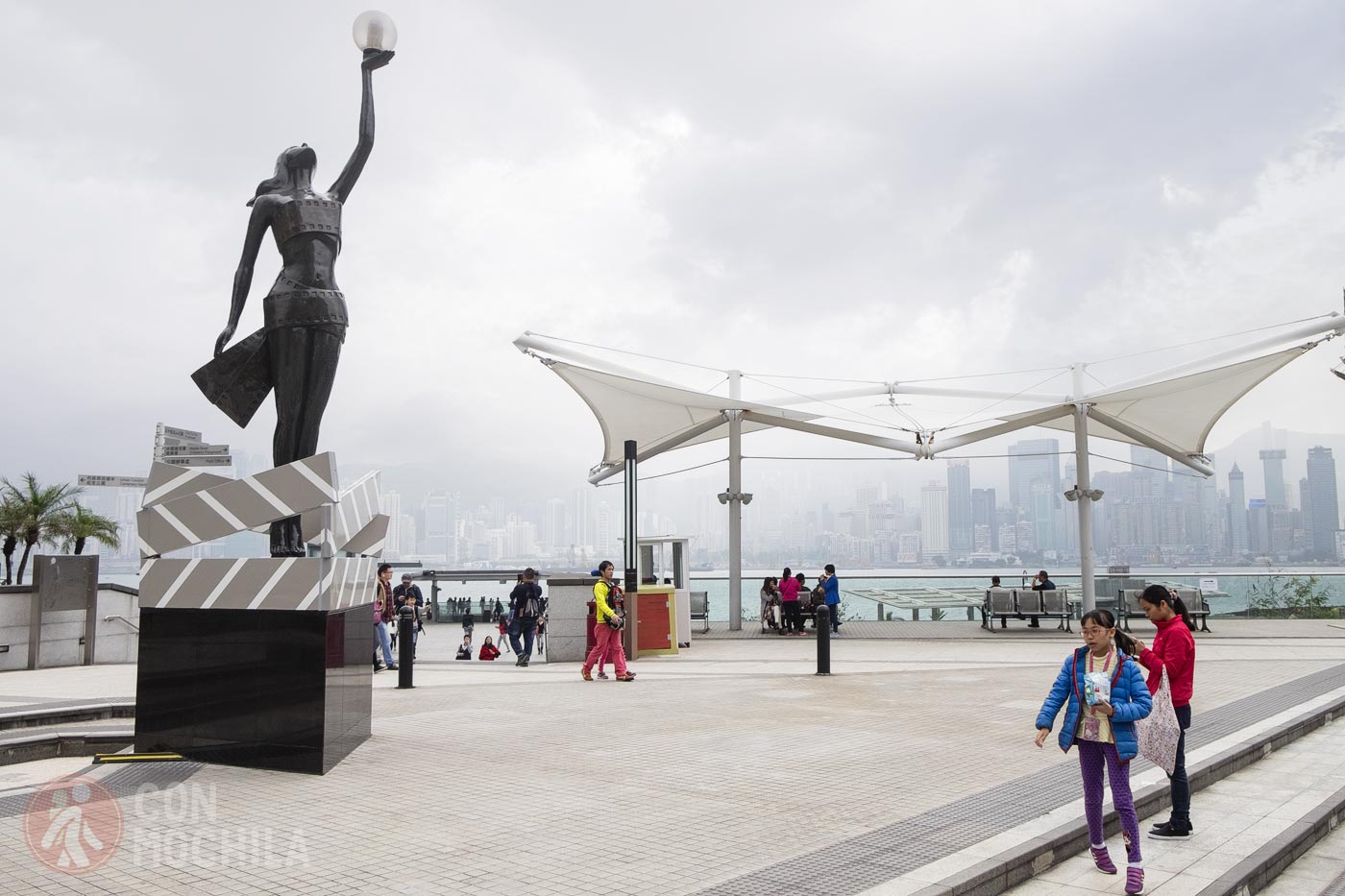
The most iconic attraction here, and the one everyone seeks to photograph, is undoubtedly the sculpture of Bruce Lee.
Chi Lin Nunnery is a monastery consisting of a group of modest wooden temples surrounding a pond, accessed from Nan Lian Gardens.
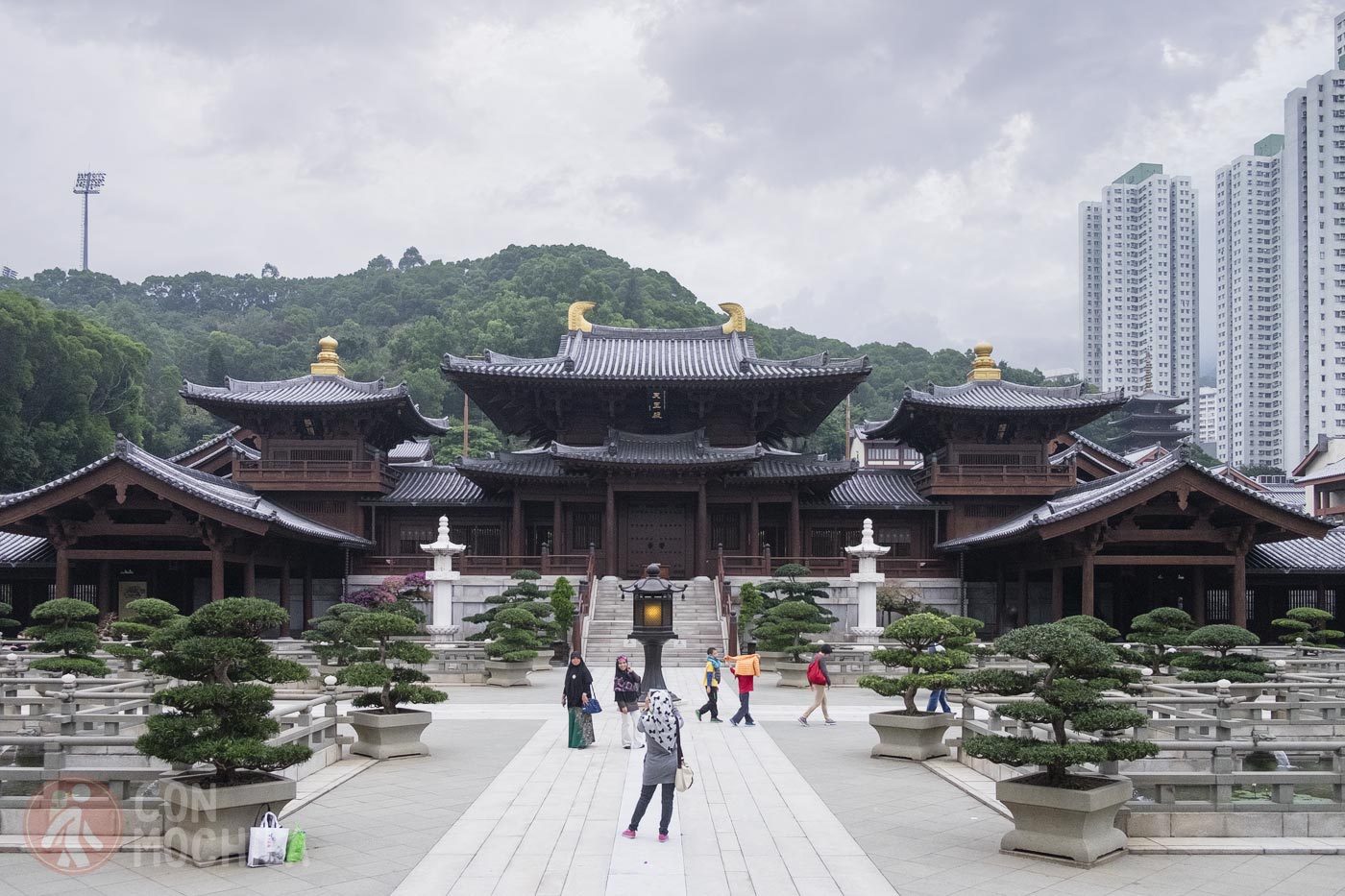
Nathan Road is a bustling area full of Chinese shopping malls, shops, and jewelry stores. Walking down it means navigating through a sea of obstacles—multiple men trying to sell you counterfeit watches, custom-made clothes, and, depending on your appearance, marijuana.
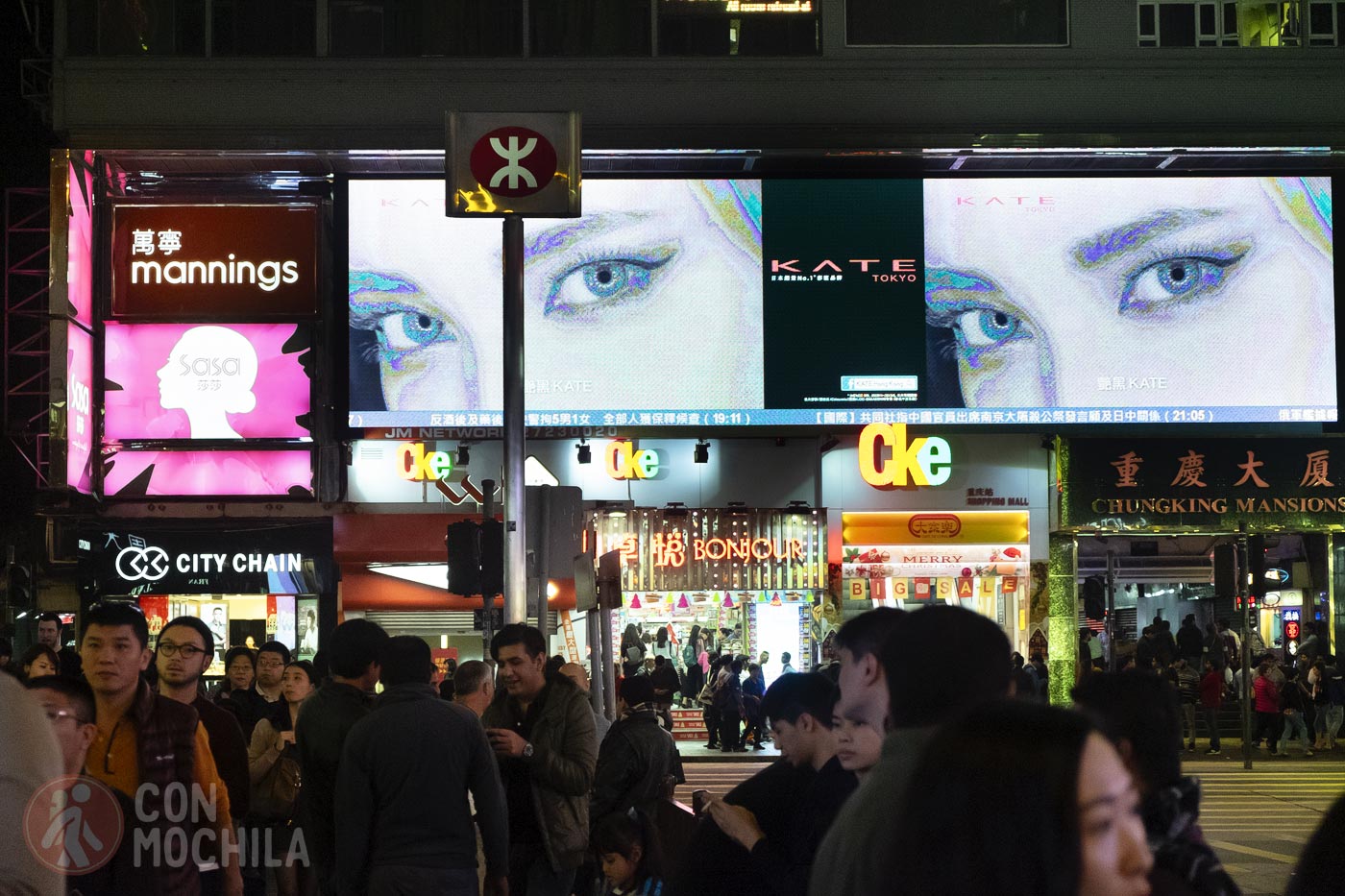
A stroll along the harbor offers stunning views of Hong Kong Island, as well as the promenade and the Clock Tower. The latter was part of the Kowloon railway station and now watches over the bay from the harbor area.
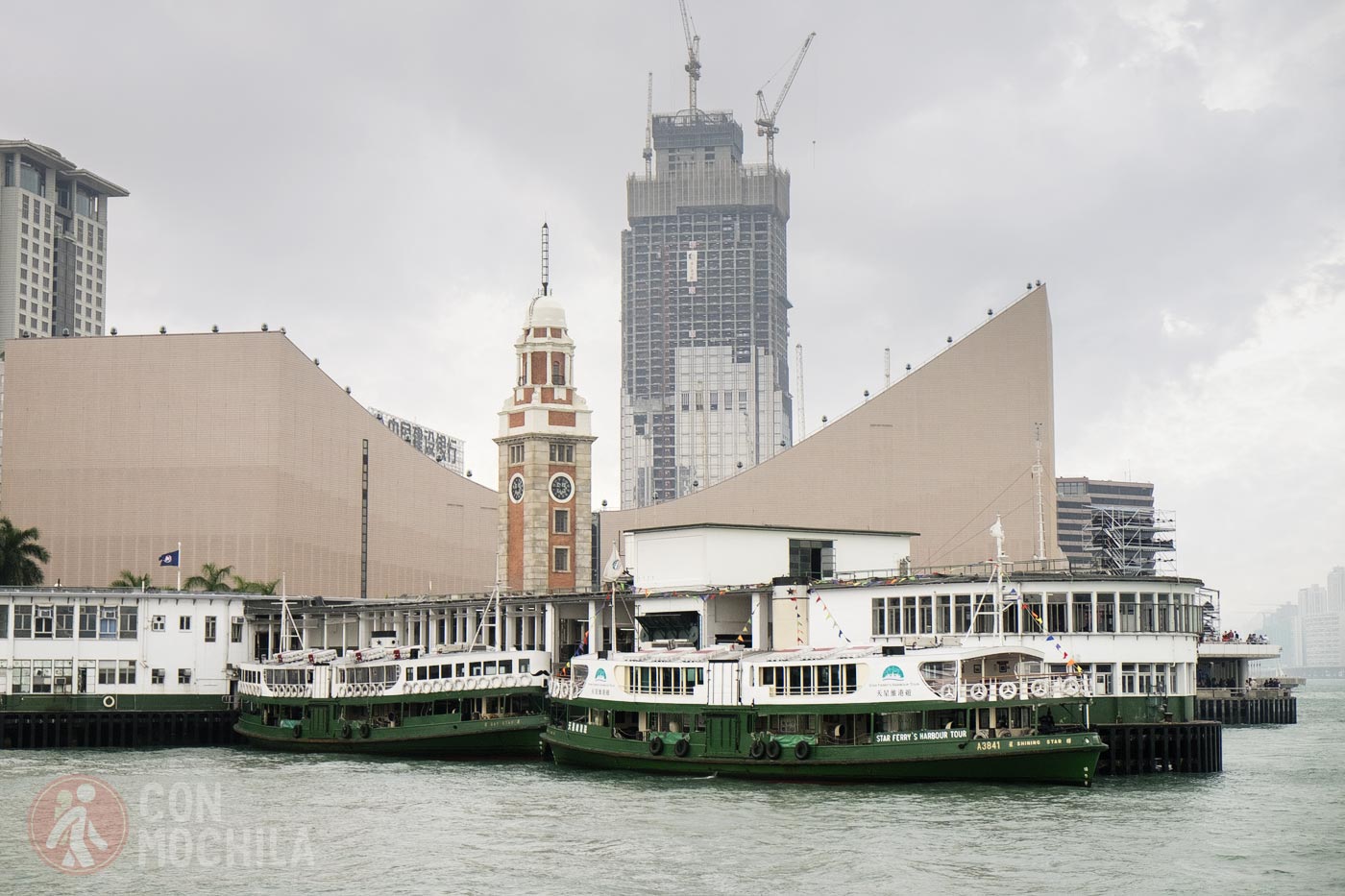
Okay, so we missed that one—no colorful light displays to the tune of music. But simply walking to the river and looking out at Hong Kong Island from Kowloon once the sun has set is breathtaking.
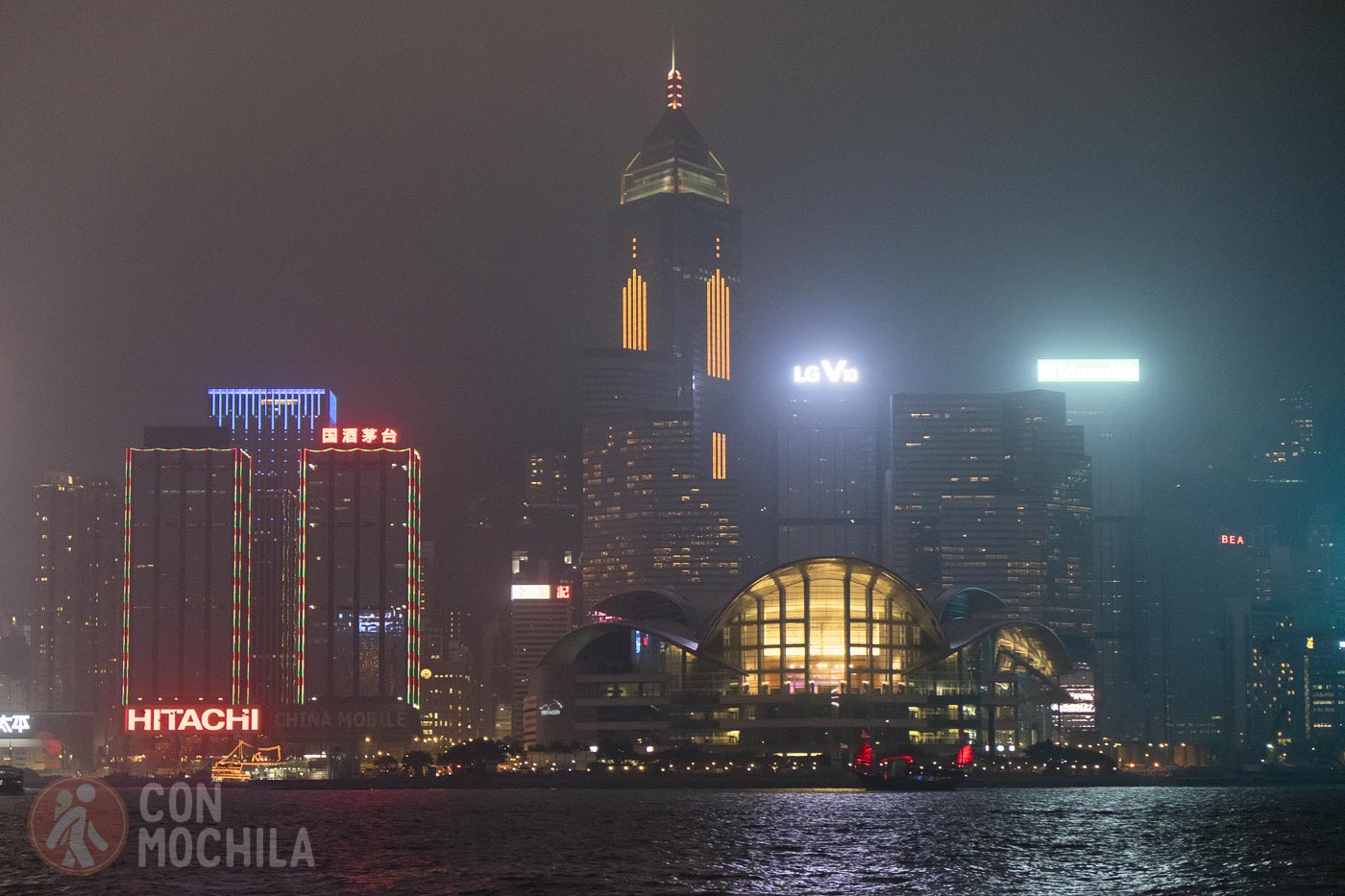
This island is completely different from the other two parts, making it well worth a visit. Spending a day on Lantau means being surrounded by nature and enjoying much fresher air than in the city, far from large buildings.
When you get off the subway at Tung Chung, you’ll completely forget that you are in Hong Kong, and anyone planning to spend a day there would be wise to wear the most comfortable shoes they have in their backpack.
Disneyland, giant Buddhas, monasteries, fishing villages, and even pink dolphins provide enough sights to fill a day or two. Getting around is very easy by bus to travel from one destination to another. Below are the key places we visited.
How to get there: Take the subway to Tung Chung station (HK$19 from Tsim Sha Tsui) and from there, take a bus around the island.
Tian Tan Big Buddha is a religious complex that houses one of the largest Buddhas we have ever seen, accessed via a long, steep staircase.
If the fog doesn’t block it, and after taking the well-deserved photos of the monument, the best thing to do is to enjoy the views of the surrounding area.
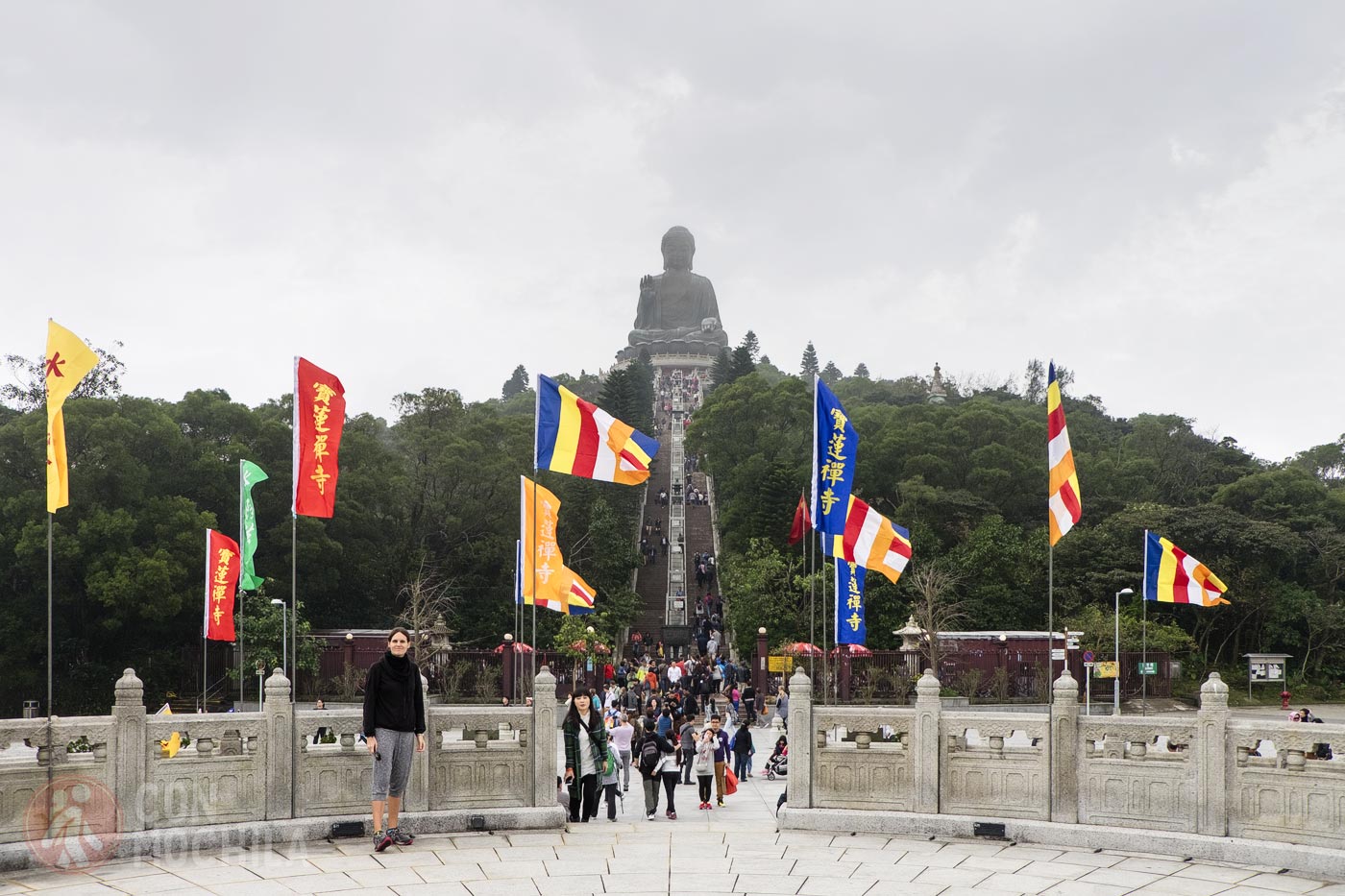
In addition to the monastery, where monks still live, you can also see the wall of ten thousand Buddhas or dine at the vegetarian restaurant.
Outside the Tian Tan Big Buddha religious complex, there is an artificial village of little interest. In reality, it is little more than a pedestrian street, a collection of shops, some food stalls, and curious tributes to the famous Hello Kitty cat in the form of large figures.
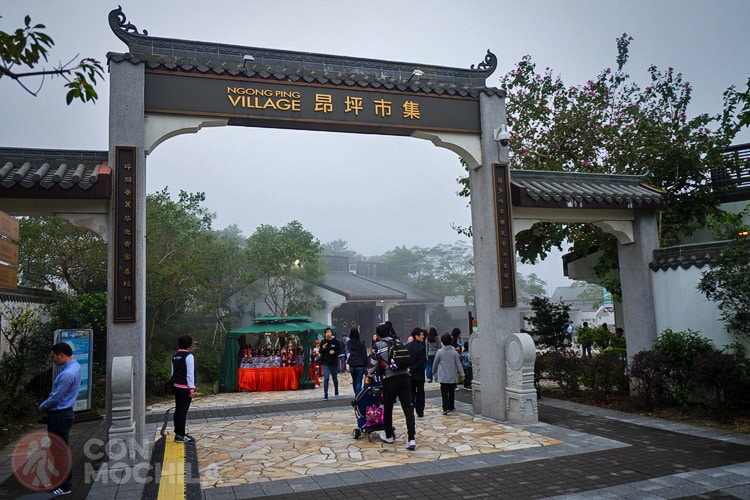
That said, if you’ve reached Ngong Ping Village, there’s nothing to lose by taking a stroll and perhaps taking a photo with the cat.
This fishing village, Tai O, is the oldest on Lantau Island. Famous for the pink dolphins that can sometimes be spotted on a boat ride, you can also see the floating part of the village (similar to Bandar Seri Begawan in Brunei or Inle Lake).
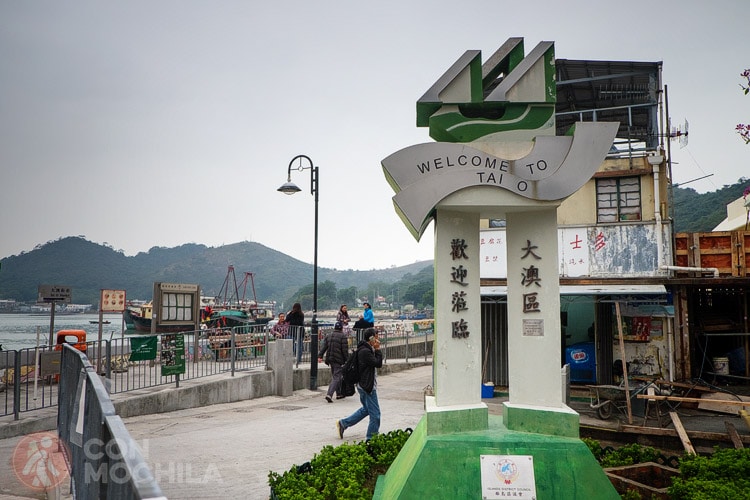
Its streets are bustling with both tourists and locals, featuring fish markets and souvenir shops. To get there, take Bus 11 from Tung Chung or Bus 21 from the monastery (HK$6).
A great option for the number of restaurants and the atmosphere is to visit Temple Street at night, where Yanjing beer and Chinese seafood restaurants are very popular. Proof of this is the large number of people who pass through there every day.
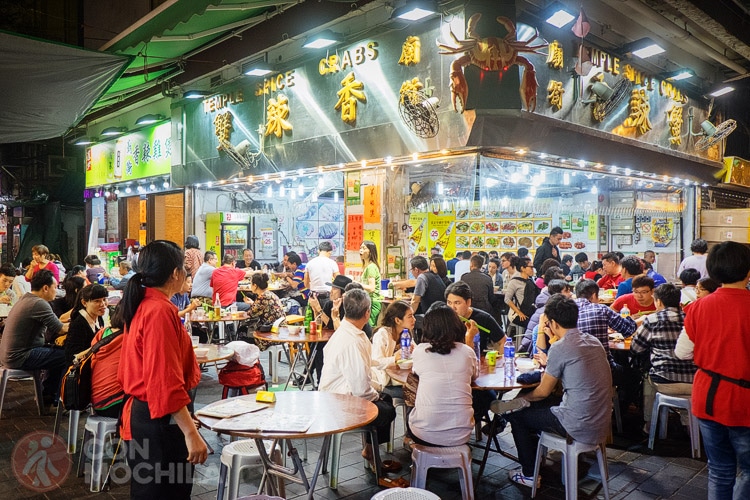
Indian restaurants located on the ground floor of Chunking Mansions: despite the fact that some of the Indians working in these restaurants have never lived or been to India (as one gentleman told us while we were dining at his restaurant), the food is authentic.
The first impression may not be great—okay, they haven’t made any effort to make the premises welcoming (which reminded us even more of small restaurants in India)—but when you taste the sauces and chapatis, you forget everything else around you.
Once upon a time, there was a huge building with a lot of terrifying legends… Yes, Chunking Mansions is not exactly the most welcoming place we’ve ever stayed, and it resembles more of an anthill than a block full of cheap hostels. However, it does its job: offering accommodation for less than 40 euros in Hong Kong.
If you can endure the smell of Indian food at any time of day, don’t mind a windowless room with just enough space for you and your luggage, or having to queue every time you use the elevator, we don’t think you’ll mind staying there.
Of all the hostels there, we ended up at New Guangzhou Guesthouse, where we paid 36 euros per night for a room with a private bathroom. (Note: The owners of this guesthouse also have another property called Guangzhou Guesthouse, which is much shabbier than the one we stayed in. They made us sleep in the old one the first day because, according to them, the other one was not available. Make sure they accommodate you in the newer one, as it’s much more decent.)
Our philosophy, at the beginning, was always “book the first night and then go find hotels as you go” but since people began to travel in masses, new hotels and new “fully booked” signs emerged, along with new booking websites. The advantage is that now you have, within reach of a click, a lot of hotels and guesthouses that you can choose from before arriving at your destination.
We recommend platforms like Booking.com or Agoda.com, which are very active in Asian countries like Hong Kong.
To get from the airport to any place in Hong Kong, the best option is to take the Airport Express, which will drop you off in the center of Hong Kong.
Getting around the city is as easy as in any other place, whether by metro or bus. However, we recommend using the ferry at least once to get from one island to another, if only to enjoy the views and sail around Victoria Bay.
Click on the image and it will take you to a new Google Maps window with all the points of interest to travel around Hong Kong.